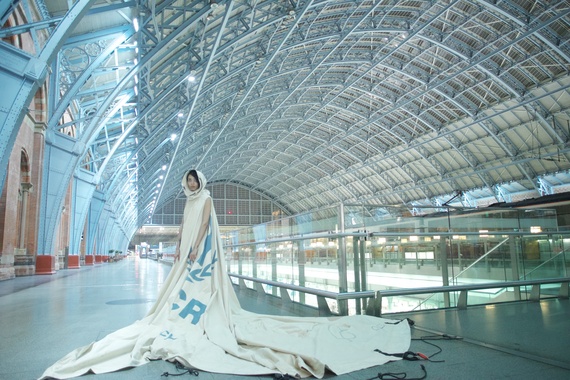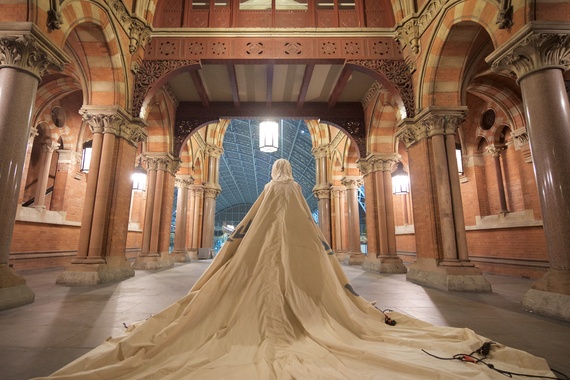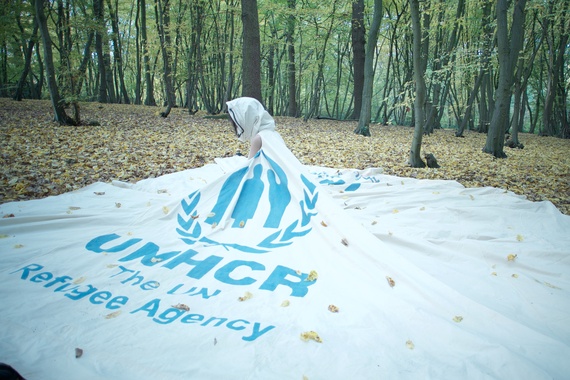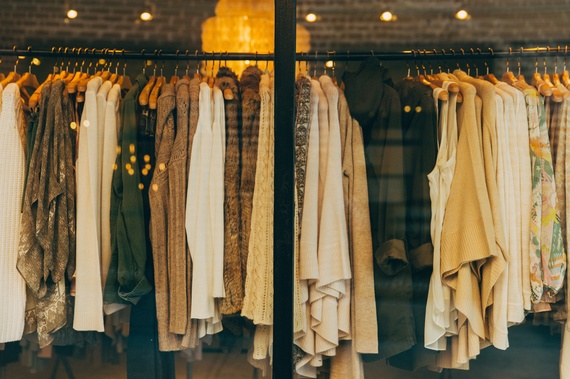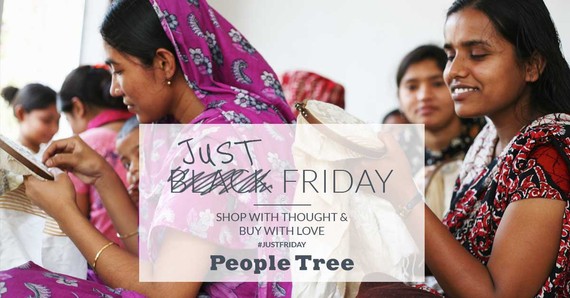Her comments come two months after her New York Fashion Week show prompted women's groups, body-image charities and even Piers Morgan to accuse her of using "painfully thin" models to present "an idealised view" of the female body, with Lorna Garner of the eating disorder charity B-eat pointing out that while shows like Victoria Beckham SS16 "do not cause eating disorders" they certainly "escalate and exacerbate existing conditions". According to her, "There is overwhelming evidence that points to these images having a very negative and damaging effect."
It's quite possibly the most tiresome subject in the fashion industry; our obsession with skinny, thin, underweight models and the impact of these models on young girls in particular. Yet what's frustrating about Victoria Beckham's comments is that they are just another example of the fashion industry's textbook response to questions about the health and wellbeing of the women and, more often than not, girls, they use in their shows: "They're thin because they're young" and, anyway, they're still "healthy".
As various fashion weeks roll out around the world, these are the same excuses we hear repeated year after year after year along with more recently accusations of "
skinny shaming and, only yesterday, Victoria's Secret model Bridget Malcolm took to Instagram to complain about the latter. "I am extremely fit and healthy and am not in the slightest way anorexic. I have worked hard to look like this and am proud of my body" she wrote on the social media site.
Malcolm probably is. In fact, most models are and one of the main reasons the British Fashion Council hasn't joined Paris in banning models with a BMI of less than 18 (a BMI of 18.5 to 24.9 is considered healthy) from London Fashion Week is that research has indicated that it is an inaccurate measure for young women. But the problem in the first place isn't that all models are anorexic stick insects (they're not). The problem is that these "skinny" models are quite literally put on a pedestal for other young girls, women and potential models to wish to emulate.
Of course, that's not to say that fashion shouldn't be aspirational. That it is and should be is undeniable. But its role in empowering women is just as undeniable, and so is its role in inspiring confidence. Karl Lagerfeld, creative director at Chanel, might think that anorexia and other eating disorders have "nothing to do with fashion" (he's also described Adele as "a little too fat" and said that only "fat mummies" hate "skinny models") but when what the fashion world tells us to aim for is unattainable, problems are inevitable.
I was 15 when I was scouted to "model" for an American fashion brand (I'll give you a hint, it's the one with the topless models that reeks of overpriced aftershave). A size six and weighing in at just over 50kgs, I also had early-stage bulimia. I was told that I was too young for the job so, after my sixteenth birthday, I tried again, this time with an agency. Over the course of those six months I'd gained 2kgs, going up to a size 6/8 and, when I didn't get the job, it was this fact I blamed. I was healthy again, sure, but if you'd given my teenage-self the choice between being health and fitting in with the androgynous figures I idolised on the catwalks of London, Paris, New York and Milan, I know exactly which one I would have chosen.
Last month, in an open letter, former model Charli Howard summed up the longing I felt. "The more you force us to lose weight and be small, the more designers have to make clothes to fit our sizes, and the more young girls are being made ill" she wrote to her modelling agency after they called her "fat". At seven and a half stone, she "still wasn't thin enough" for her agency and her experience, along with the experience of other models, is now the subject of an All Party Parliamentary Group inquiry into body-image.
"I am increasingly concerned about models working in the industry and young people who feel pressured to conform to this unrealistic standard of beauty" MP Caroline Nokes, the leader of the inquiry wrote yesterday. Conducting it, she admits that she was contacted by many people "with grave concerns about the industry, including models themselves, their parents and those who suffer from eating disorders", as well as modelling agencies defending their "difficult decisions".
In the world of the latter, fashion as it stands reflects not the average consumer as they are, but as they want to be, a reflection that presents models who are "down to the bone" as an empowered alien elite, marching down a runway with their half-moon totes in hand. The reality, as Nokes' inquiry is beginning to discover, is not so simple.
As the same excuses are repeated, it's hard to forget the words of one fashion CEO, who famously said of his brand, "Are we exclusionary? Absolutely".
-- This feed and its contents are the property of The Huffington Post, and use is subject to our terms. It may be used for personal consumption, but may not be distributed on a website.






